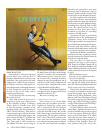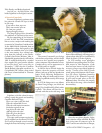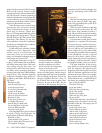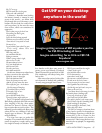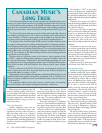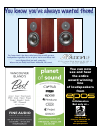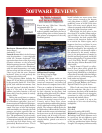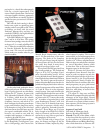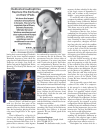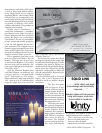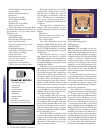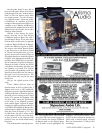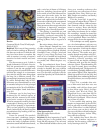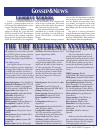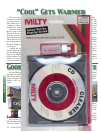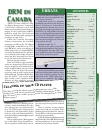
Feedback
Software
lowing their secret marriage. Elizabeth’s
letters to her sister inspired composer
Dominick Argento to write these five
songs for the wonderful mezzo-soprano
Frederica von Stade: Casa Guidi, the
Italian Cook and the English Maid, Robert
Browning, The Death of Mr. Barrett, and
Domesticity.
Fans of “Fricka” will find her again
with joy. She has lost none of the
immense talent that propelled her to the
summit of her art, where she has shone
since her beginnings, playing all of the
roles most sought after in the opera
world.
That is followed by a Capriccio for
Clarinet and Orchestra, subtitled Ros-
sini in Paris, brilliantly performed by
virtuoso clarinetist Burt Hara. It is in
point of fact a concerto, a title Argento
has eschewed by respect for “the” clari-
net concerto, the one by Mozart. The
movements have the curious titles of
Une réjouissance, Une caresse à ma femme
and Un petit train du plaisir. Each refers
to a composition by Rossini, but they
are mere pretexts for development of
a “Rossiniesque” ambience of comical
verve, fantasy and humor, with a certain
touch of romanticism.
The final work, commissioned by the
Minnesota Orchestra for its 75
th
season
(in 1977), is titled In Praise of Music: Seven
Songs for Orchestra. Each song is inspired
by a character, either real or mythical,
who awaken in universal fashion feelings
inherent in human nature.: David for the
healer, Apollo for the god, Pan for the
Satyr, Orpheus for the sorrower, Israel
for the angel, Cecilia for the saint, and
Mozart for the child.
We should not be surprised by the
extraordinary performance by Eiji Oue
and the Minnesota, whoch have accus-
tomed us to excellence.
The sonic quality of this HDCD
recording, like those of the Reference
Recording that follows, is beyond
reproach. We can, I think, speak of the
Johnson sound.
American Requiem
Danielpour & Pacific Symph. Orch.
RR-97CD RR-97CD
Lessard: The dedication reads, “to the
memory of those who died in the wake
of the tragic events of September 11,
2001, and in tribute to the American
Soldier — past, present and future.”
To mark the end of his posting as
composer in residence with the orchestra
in Orange County, California, Richard
Danielpour received a commission for a
major work for choir and large orchestra.
The theme was to be peace, but also
man’s relationship with war.
Danielpour admits that, before
embarking on this project, he had not
the slightest experience of war, and so he
booked meetings with veterans of three
wars. Listening to them, writing down
their experiences, thoughts and feel-
ings long after the end of the conflicts
in which they had fought, enabled him
to get at least a hint of the incurable
traces left by the tragedy of war. So
impressed was he by the experience that
the urgency grew in him to translate into
music these deep experiences.
On the fateful morning of what
would become known as 9/11, Daniel-
pour was preparing to edit the proofs
of the orchestral score of his American
Requiem, but realized that it included
neither preface nor dedication. He was
on the phone to his publisher in New
York, when she told him with horror
that before her eyes a plane had just
struck a tower of the World Trade
Center. He knew instantly that he had
his dedication.
One is generally eager to find ante-
cedents in the works of a composer:
in this passage he is clearly influenced by
Bach, or one can recognize the style of
Mozart. It is possible, indeed certain,
that because of Danielpour’s use of two
languages — English and Latin — pur-
ists will think first of Brahms’ German
Requiem or Britten’s War Requiem. One
might equally be tempted to make
comparisons with the Requiem of Verdi,
recalling his use of a multitude of instru-
ments and the importance given to the
human voice. Too easy. It would be even
more facile to talk of plagiarism.
For my part I believe that, notwith-
standing any similarities, deliberate or
otherwise, this religious opus is both
magnificent and eloquent. I consider it
a gift to have been asked to review it.
Danielpour has written this for a
72 ULTRA HIGH FIDELITY Magazine



